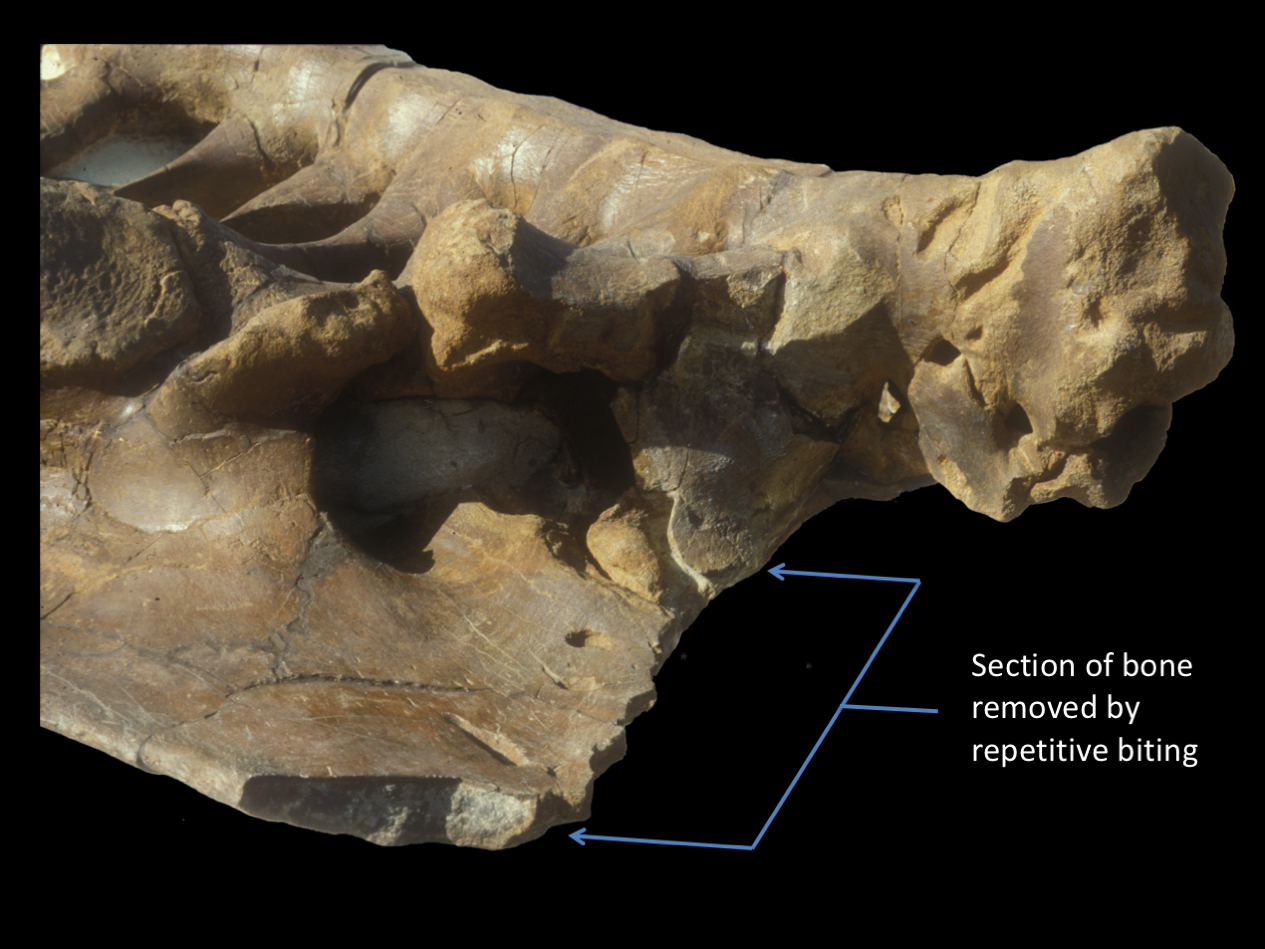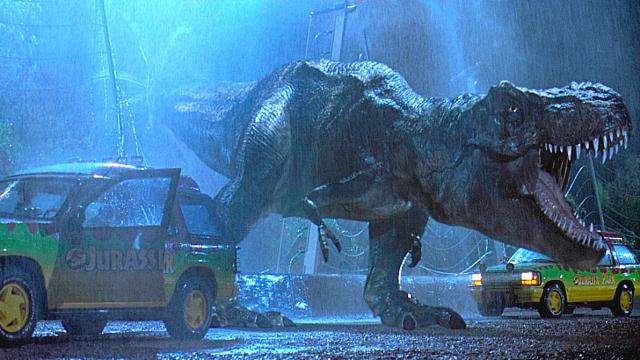In the 1993 cult classic Jurassic Park, a T. rex manages to scare the living crap out of kid heroes Lex and Tim Murphy by casually ripping apart their Ford Explorer like it’s a scrap of meat. It’s a scene that crystallised the destructive power of this extinct apex predator in the public consciousness — and as a new study highlights, it might not have been that hyperbolic.
Image: Universal Pictures
Monster movies a’plenty have taught us that T. rex was not a beast to be trifled with, but if you want to know exactly how screwed you’d be to find yourself caught between the Cretaceous carnivore’s teeth, you’d need to carefully measure the animal’s bite force. Not so easy for a creature that went extinct 66 million years ago, but that’s exactly what a team of Florida State University palaeontologists has now done, using a combination of fossils, 3D reconstructions and computer modelling.
The researchers estimated that T.rex chowed down with a bite force of 3629kg, which is roughly twice the chomping strength of the saltwater crocodile, today’s world champion biter. Combined with an insanely high tooth pressure, the results explain how T. rex was able to pulverise the bones of other dinos to access their nutrients.
Bone crushing — extreme osteophagy in the scientific parlance — is a trait exhibited by just a handful of mammalian scavengers and predators today, including the spotted hyena and the grey wolf. Osteophagy is almost unheard of in reptiles; their long, conical teeth don’t tend to clamp together to deliver the crushing forces needed to shatter bone. And yet Gregory Erickson, FSU palaeontologist and co-author of the new study published yesterday in Scientific Reports, has long observed that the bite marks on the brutalised carcasses of T.rex lunches indicate a bone-chewer.
“One thing I noticed [early on in my career] is that T.rex was pulverising bone,” Erickson told Gizmodo, recalling a giant triceratops pelvis that “looked like it had been chewed up by some sort of monster — some sort of giant dog. I was able to figure out it was T.rex by looking at the bite marks.”
To show that T.rex‘s teeth had what it took, Erickson, along with palaeontologist Paul Gignac, performed a comprehensive analysis of the animal’s bite, combining measurements from T.rex skulls and teeth, high-resolution casts, and an anatomical model Gignac developed during grad school to predict bite forces in crocodilians based on their musculature. Ultimately, the researchers estimated a T.rex could deliver some 3629kg of bite force on average, roughly the weight of three small cars.

Bite marks on the fossilised meal of an ancient T.rex. Image: Erickson /Science Advances
More significantly for bone crushing, the animal’s tooth pressure — a measure of how forces are transmitted through each tooth — reached a staggering 195,498kg per square inch, the researchers found. Together, high bite force and bone pressure allowed T.rex to drill into bones through repeated gnashing, eventually causing them to shatter or explode. According to Erickson, T.rex probably used its bone crushing teeth to access marrow and phosphate minerals. “These animals were able to extract nutrients from bone,” he said.
It isn’t the first time scientists have attempted to measure T.rex‘s bite force, and some previous estimates have been even higher. Erickson thinks his numbers, while conservative, are more accurate, because they’re based on scaling forces up from the muscles of crocodiles, a close living relative.
Eric Snively, vertebrate anatomist and palaeontologist at University of Wisconsin La Crosse who was not involved with the new research, said it was “a great study” and agreed that the authors are on the right track with their bite force estimates. “They carefully reconstructed many muscles and accounted for important aspects of muscle architecture and physiology.”
“I’m surprised at the high tooth pressures they found for T. rex, because we usually consider the teeth to be blunt rather than super sharp,” Snively continued. “However, their result is consistent with the insanely robust teeth behind those terminal cutting edges; the teeth could handle the bone-splintering forces.”
Snively added that refining models of T.rex‘s face muscles might slightly increase the animal’s bite force in the future, noting that “it’s possible that muscles in big dinosaurs could inherently produce more force/area” than the authors’ crocodile-based models assumed.
As for whether those bone-splintering teeth could really rip through the body of a ranger vehicle? Erickson wouldn’t go that far — yet. “I’m not sure the teeth could survive biting into metal,” he said.
